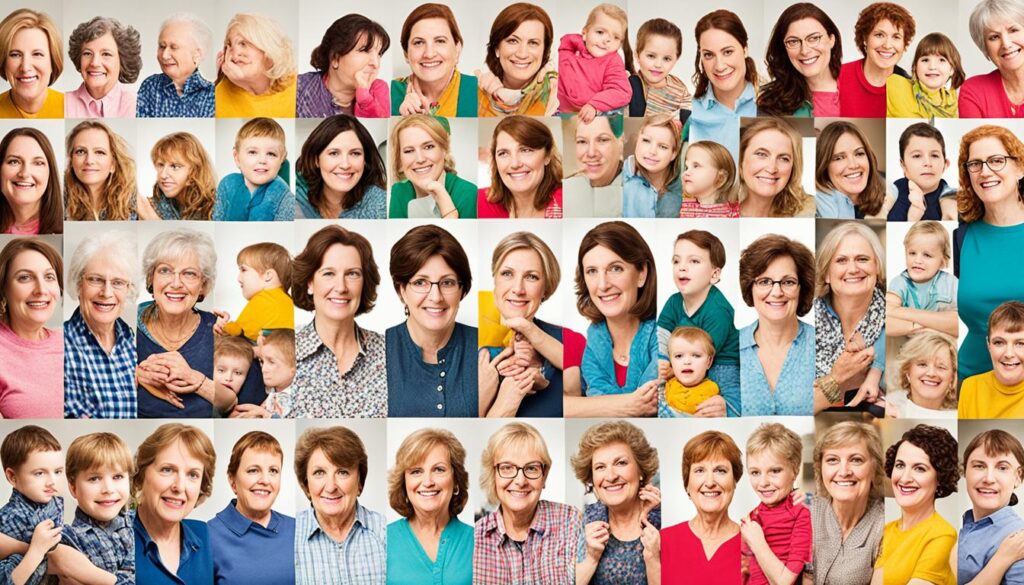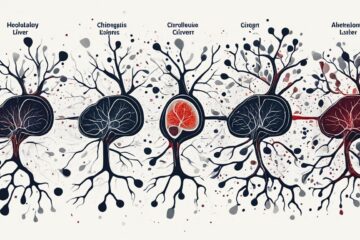Are women with autism being overlooked? Recent research shows autism is seen more in males. But now, we are understanding more about autistic women. We look at how autism is different for women, the challenges they face, and more in this article.
Key Takeaways:
- Autism in women presents differently than in men
- There are specific traits more common in women on the spectrum
- Diagnostic challenges make it hard to identify autism in females
- It’s crucial to understand autistic women for their support and acceptance
- More research is needed to better diagnose and support women with autism
Gender Differences in Autism
Autism affects people of all genders. But, it shows up differently in females. Females might show different signs on the autism spectrum. So, it’s important to understand these differences for a right diagnosis and support.
Females and males with autism face similar issues. These include trouble with talking to others and acting in social ways. But, some signs are more common in females. These signs are:
Social camouflaging: This means females with autism can act like they’re fitting in well, hiding their struggles.
Masking: Women might also hide their problems, delaying or making it harder for doctors to find out they have autism.
Sensory sensitivity: Some females might find things like loud sounds, bright light, or certain textures very hard to handle.
Special interests: Ladies with autism might get very focused on a certain subject, just like men do.
It’s hard to see and understand autism in females. The research often looks at how it affects males more. This focus can lead to not spotting or wrongly saying someone does not have autism if they are female. We need to look at and address these differences to help women with autism get the right care they need.
https://www.youtube.com/watch?v=b2-LT_YeH0s
Diagnostic Challenges
It’s tough for doctors to spot autism in girls and women. Many are thought to not have autism when they do. This happens because their symptoms might not match what doctors usually look for.
A big issue is not knowing enough about autism in girls and women. People often think only boys have it. This wrong idea could keep girls from getting the help they need.
Some girls hide their autism. They act like others around them to fit in. This makes doctors’ jobs of detecting autism much harder.
“The delayed or missed diagnosis of autism in women can have significant consequences, as it can hinder the access to appropriate support, interventions, and accommodations.”
Girls and women with autism can show their struggles in quiet ways. They may find it hard to talk to others, be bothered by certain sounds or touches, or have very focused interests. Doctors might not see these as signs of autism.
Doctors need to get better at spotting autism in girls and women. They should learn more about how autism shows up in females. This could help get more girls the right support.
It’s also important to talk about autism in women more. Doing this can help doctors understand it better.

Challenges in Traditional Diagnostic Tools
The tools used to check for autism don’t always fit women’s symptoms well. They were set up mostly for boys. Changing these tools to better fit girls and women could help find autism earlier.
| Challenges in Diagnosing Autism in Women | Implications |
|---|---|
| The reliance on male-centric diagnostic criteria | This may result in overlooking or underidentifying autism in women. |
| The masking and compensatory behavior of women with autism | This can lead to the misdiagnosis of other mental health conditions. |
| The subtler presentation of autistic traits in women | Healthcare professionals may not recognize or attribute these behaviors to autism. |
| The societal perception that autism primarily affects males | This perpetuates the underdiagnosis and misdiagnosis of autism in females. |
Different experts need to work together on this issue. They can make tools to diagnose autism better for women. This way, more women can get the right help sooner.
Autistic Female Profiles
Autism shows up differently in everyone, especially among women. They have profiles distinct from males. It’s key to identify these for better help and accurate diagnosis.
Female autism shows unique symptoms. These differ from males but may share some traits. Knowing this helps improve awareness of women with autism.
Signs in female autism symptoms may not show as clearly. Girls and women with autism might hide their social struggles well. They might desire friendships a lot but find it hard.
Autistic women often face more sensitivity to things like sound and light. These can greatly affect their daily life and may cause stress.
“Understanding and identifying the specific profiles of women with autism is crucial for accurate diagnosis and tailored support.”
Women with autism have special interests that can differ from men’s. These interests can be activities many find acceptable. Supporting these passions is important for their happiness.
Women’s autism profiles can be very different. Some need a lot of support, while others are more independent. Every woman’s case is unique.
Case Studies
Case studies help us see the range of experiences in women with autism. Let’s look at a few examples.
| Case Study 1 | Case Study 2 | Case Study 3 |
|---|---|---|
| Amy | Sarah | Lily |
| Age: 25 | Age: 30 | Age: 16 |
| Anxiety, sensory overload | Artistic talent, difficulty with verbal expression | Highly focused interests, challenges with social interactions |
These cases show us the variety in women with autism. They help us understand more about what these women go through.

The image above shows women doing things to support everyone on the autism spectrum. These efforts make welcoming spaces for all women with autism.
Autism Research in Females
This part talks about autism in women. It looks at what we know now. Understanding how autism is different in females has helped a lot.
For years, we mainly studied autism in males. But now, we see the need to also focus on females. Research shows women with autism may be different in how they show symptoms.
Research also suggests women with autism may act differently. This makes it hard to diagnose them. Researchers are studying these differences to help make better diagnostic tools.
“Previously, autism research focused predominantly on males, but we are now witnessing a shift towards more inclusive research that investigates the unique experiences of females on the spectrum.”
There are also studies about genetic and hormonal links to autism in females. Finding these links might help create better treatments.
Recent Studies
Dr. Sarah Cassidy and her team looked at how women are diagnosed with autism. They found a gender bias. This means we need better ways to spot autism in women.
“Our study emphasizes the need for gender-sensitive diagnostic tools that consider the unique traits and presentation of autism in females, enabling accurate identification and early intervention.”
Another study by Dr. Chloe Lawson checked on the mental health of autistic women. It found that they often feel anxious and sad. This shows we need better support for them.
The Importance of Continued Research
Research on autism in women is very important. It helps us meet their needs better. This means better diagnosis, care, and support for a good life.
Autism Awareness and Advocacy
It’s very important to make sure women with autism are not left out. We need to know more and support them better. Advocacy helps make the world more open and helpful for them.
Society needs to see and understand the unique needs of women with autism. People like doctors and teachers should learn about the special signs of autism in females. This helps them get the right help they need.
Autism shows up differently in females. They may have other ways of talking or being with others. Not understanding this can mean they don’t get the help they should.
We must work on making autism awareness in women better to stop wrong ideas about autism. By sharing the real facts, we can stop treating women with autism unfairly.
Helping women with autism get better lives through advocacy is key. Advocates help them be heard and push for fair rules. They want these women to have an equal chance in life, at school, work, or in the community.
Support and Resources for Women with Autism
It’s key to think about what women with autism need. Special supports can help them a lot. They make it easier to do things in life. This includes finding friends or getting certain services. Let’s look at ways to help them.
Social Support Networks
Finding others who get them is really good for women with autism. Online groups like Autism Women’s Network and Women in the Spectrum are great. They give a safe place to talk and make friends. They also help everyone grow stronger together.
Local groups or meetups can also be awesome. They allow real meet-ups and new friendships. It’s a chance to talk, share tips, and have fun together. This way, women with autism support each other in their local areas.
Educational Resources
Learning more about autism is important for women who have it. They can use books, podcasts, or take online classes. These are made just for them. They give great advice and tips for daily life.
Groups like Autism Society and Autism Speaks help a lot. They offer many helpful things, from self-care to work skills. Their info and tools are there to make women with autism’s lives better.
Professional Support Services
Seeing experts can really help women with autism. Therapists and counselors who know about autism can offer personal advice. They help overcome difficulties and set better goals. They focus on issues like health, jobs, or making friends.
Advocacy Organizations
Groups that stand up for autism are very important. They push for changes that help all, especially women. Working with places like Autism Women Matter and National Autism Association helps. It makes society more open and kind to women with autism.
Financial Assistance Programs
Some women with autism face money problems. It might stop them from finding support. Looking into help programs is a good idea. There are many ways to get financial aid for therapy or education. Charities or the government can help.
Conclusion
This article shared important info about autism in women. It looked at women on the autism spectrum and the differences from men with autism. We learned about the special traits women with autism often have.
It can be hard to diagnose autism in women. This shows a big need to know more about autism in women. Knowing these differences can help give the right help and support.
Autism awareness and action are key. Talking about women’s experiences with autism can help make our world more understanding. It can help make a better community for everyone.
We must keep studying autism in women. Learning more means we can offer better care. This will help women with autism do well in life.
Learn more about autism in women. Let’s all work to make a world that welcomes everyone, including those with autism.




